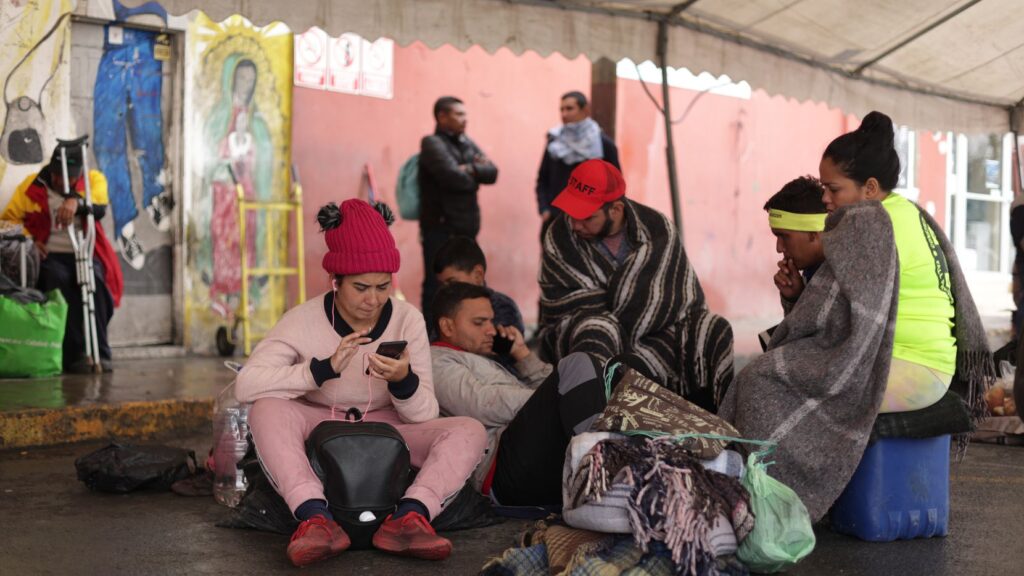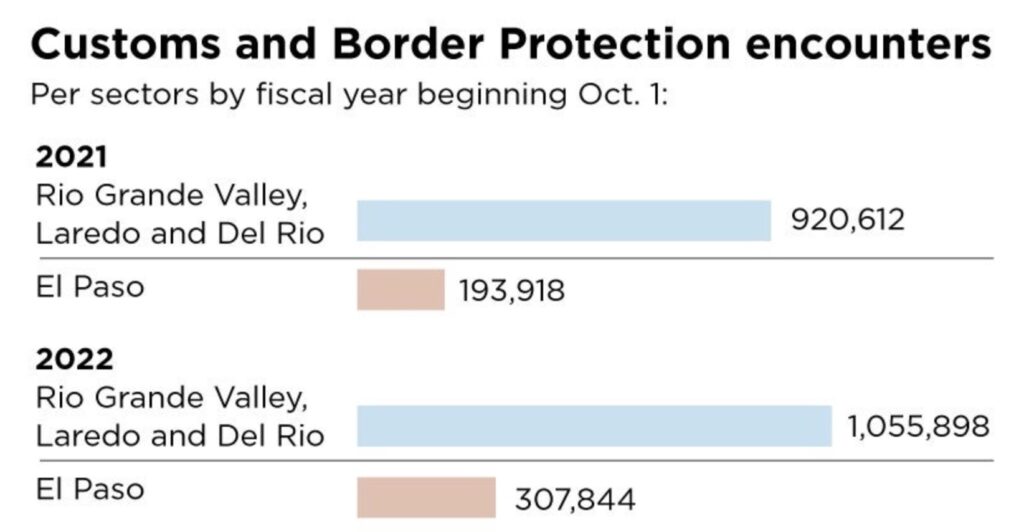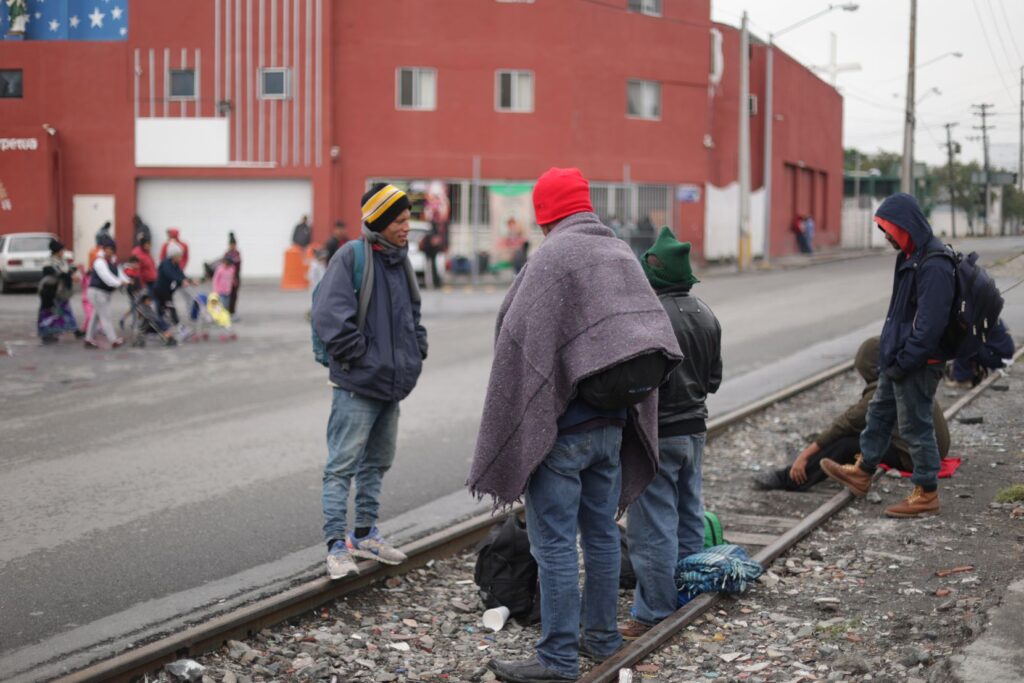Monterrey, with strong Dallas ties, has become a logistical hub for people fleeing economies ravaged by the COVID-19 pandemic.

MONTERREY — Graced with Lone Star brands like H-E-B, Whataburger and 7-Eleven, this affluent city in northeastern Mexico is home to global conglomerates and posh neighborhoods, enjoying strong economic and cultural ties to Dallas-Fort Worth. It’s a mere two-hour drive from the Texas border.
Francisco Contreras, who migrated here from Guatemala, has grown fond of Mexico’s third largest metro, with its wide avenues, skyscrapers and plentiful jobs. Then there are the smuggling organizations. They’ve offered to take him to the United States, he said, to a choice of destinations.
It was late summer. Standing outside a faith-based shelter, borrowing a cellphone, he pointed to a map of border cities within a short ride. He said he’s in no “real hurry” to continue his journey to North Texas, where he knows many other Guatemalans working in construction.
“I’m waiting,” he said, “for the right moment.”
How Contreras got here underscores the importance of Monterrey, not just as a prosperous city with a need for more workers, but also as a high-profile waystation — an increasingly important logistical hub for some people fleeing violence and economies ravaged by nearly three years of the COVID-19 pandemic.
Consider it a long layover: Instead of rushing to the Texas border, Contreras and many other migrants are waiting before heading north, settling here while watching the shifts in U.S. immigration policy.
And when these migrants finally decide to continue their journey, many will come to North Texas, motivated by jobs and networks of families and friends, according to Mario Lino Garcia, an immigration specialist and director of Clinica Juridica Migratoria (Judicial Migratory Clinic) at the University of Nuevo León in Monterrey.

“Many migrants have stayed in Monterrey and raised or formed families,” said Victoria Rios Infante, coordinator of Tendiendo Puentes (Building Bridges), an effort to integrate migrants into their communities. She co-authored an October 2020 Tufts University study, A Picture of Central American Mobilities, examining how migrants have transformed Monterrey’s neighborhoods.
“This is no longer just the American dream, but also the regiomontano dream,” she said, using the term for native residents of Monterrey.
A leading city of labor
The metro area of Monterrey, the capital of the state of Nuevo León, is home to more than 5 million people. By comparison, the D-FW metro area has about 7.7 million residents. Both are home to many international companies, and both are big sports towns, as D-FW is enamored with the Dallas Cowboys, while Monterrey loves its Rayados and Tigres soccer teams.

“The relationship between Mexico and the United States flows through North Texas and Monterrey. You cannot understand the relationship between the U.S. and Mexico without Monterrey and Dallas,” said Francisco de la Torres, Mexican consul general in Dallas.
“I took [Dallas Mayor Eric Johnson] to Mexico this past spring, but the trip would have been incomplete if we had not visited Monterrey,” he said.
“Dallas and Monterrey share many similarities,” Johnson told The News. “Much like Dallas, Monterrey is the economic engine of a large and dynamic metropolitan area. Both cities are rich with history, culture, major professional sports teams and fantastic food.
“And our cities are similarly home to strong and resilient people. It was a genuine pleasure to visit Monterrey earlier this year, and I wish I could have stayed longer. For 30 years, Dallas and Monterrey have been sister cities, and I am hopeful that we can build an even stronger relationship in the years ahead.”
Monterrey is also a leading city of labor, both legal and undocumented. The city is a major transit point for farm workers applying for legal temporary work visas. They travel to the U.S. legally, without their families, to pick oranges, cucumbers, sweet potatoes, onions and berries for specified periods of time before returning home.
In fiscal year 2021, an estimated 239,274 legal visas were issued to Mexican workers headed to Texas, North Carolina, Michigan, California and other states, according to the U.S. State Department. Since fiscal year 2017, those H-2A visa issuances in Mexico grew from 147,272, or by 62%. The majority of visas were issued by the U.S. Consulate in Monterrey.
The city is on a key trade route used by millions of commercial trucks hauling cargo, which too often includes human beings, according to the Mission Foods Texas-Mexico Center at SMU.
The so-called “NAFTA highway” (named after the North American Free-Trade Agreement) turns into Interstate 35 on the U.S. side of the border. It’s a straight shot to Dallas-Fort Worth, and then all the way north to Canada.
The highway has also become a lynchpin for criminal organizations and smugglers, according to both U.S. and Mexican law enforcement agencies.
A pipeline of migrants
The cities of Ciudad Acuña, Piedras Negras, Nuevo Laredo, Reynosa and Matamoros are all adjacent to the Texas border, providing a pipeline of migrants from Venezuela, Haiti and several Central American countries. Many of the migrants come through Monterrey.

“This isn’t just any city, this is Monterrey, the Sultan of the North, as we know it here, with a giant economic engine,” said Lino Garcia, the immigration specialist. “Here, people somehow blend in, and because of [the city’s] economic might and size and because of its enviable location, it’s a magnet for organized crime, which in turn preys on vulnerable migrants.”
Of the 2.2 million U.S. apprehensions in fiscal year 2022, more than 1 million took place in the Border Patrol sectors of Del Rio, Laredo and the Rio Grande Valley. The border cities in those sectors are all within a 3- to 6-hour drive from Monterrey. The Yuma sector in Arizona, which came in second place, accounted for an estimated 310,000, followed by El Paso with 308,000, according to U.S. Customs and Border Protection.


“Monterrey represents not so much a gushing pipeline, but a dripping pipe,” said Ariel Ruiz, a policy analyst at the Washington-based Migration Policy Institute. “They’re a small number, but continuous.”
The neighboring states of Coahuila and Tamaulipas remain key entry points for the Texas border. But Saltillo, the capital of Coahuila, has less than a million people and, in terms of job creation, pales in comparison to Monterrey.
Meanwhile, in Tamaulipas, the border cities of Nuevo Laredo, Reynosa and Matamoros are plagued by drug cartels. While Monterrey has its own security issues and gender-based violence, the U.S. government warns against all travel to Tamaulipas due to kidnappings and other crimes. That warning resonates among migrants.
“For migrants, in Monterrey you find a city that can embrace you and provide you with a job, which is the dream of every migrant fleeing their homeland,” Lino Garcia said.
Monterrey residents “are far from perfect, but in general [they] don’t see migrants as part of an invasion,” he said. “There is a sense that this is a global phenomenon, that we’re talking about humanity. Yes, from time to time you see a backlash. But we don’t have politicians who profess a hostile attitude toward migrants. This is not the United States.”
Testing Monterrey’s tolerance
Among the migrants testing Monterrey’s tolerance is Jean Louie Brevil, a Haitian, who arrived in Monterrey in September 2021 after he and thousands more were turned away by U.S. immigration authorities in Del Rio.
Instead of waiting in Ciudad Acuña or Piedras Negras, Brevil moved to Monterrey with his wife and infant daughter. For weeks, they lived at Casa Indi, one of the largest migrant shelters in northern Mexico. They later found a one-room apartment in San Nicolas, a city in Monterrey’s metro area.
More than a year later, he remains here and works odd jobs. Brevil was part of a wave of migrants who had journeyed through Chile. He speaks some Spanish. His goal is still to get to Florida someday.
“It’s been hard,” he said in late July, speaking near Casa Indi. “You’re always careful about not being exploited by Mexicans. But I’m living and working in a city where even a Black person can blend in, because there are plenty of jobs and migrants from all over the world.”
Another migrant, Bassim Ibrik of Lebanon, moved here from Austin about a decade ago with his Monterrey-born wife. He drives an Uber. “I didn’t see myself living here for more than a year,” he said. “But I love it here because it’s a multicultural city and always growing.”
So much growth that extreme drought forced this mammoth city to ration water during the summer, though the reservoirs are nearly back to normal. Some neighborhoods were without water since May. The government is investing $97 million to build a wastewater treatment plant.
‘Snapshot of humanity’
At Casa Indi, Father Felipe de Jesús Sánchez Gallegos watches what he calls “a fluid snapshot of humanity.” Sometimes “we have migrants from Haiti, Cuba, Venezuela and lately Central Americans,” he said. “I think they know Monterrey can be a key part of someday reaching their dream destination.”
Outside the shelter, Francisco Contreras, the man who moved here from Guatemala, was surrounded by other migrants, mostly Venezuelans and Hondurans.

Contreras, who worked as a farmer, left his homeland due to extortion, threats by organized crime and what he calls “lack of rain, due to climate change.” With an economy rocked by the pandemic, he said, he had no choice but to head north.
One summer afternoon, Contreras and the other migrants offered one another tips on which employers paid well. At the time, he said he wanted to migrate to North Texas by autumn. Reached by phone in November, he said he’s concerned that life in the U.S. might be dangerous – that he might be hurt or even killed by people who see him as a threat. He said he has delayed his trip until after the winter, hoping “the political situation is more calm, that Americans value our presence.”
Besides, he said, “I just got a raise. I can afford to wait.”

Alfredo Corchado has covered U.S.-Mexico issues for The News since 1993. A graduate of UTEP, he’s also reported from Washington and Cuba. Before the News, Corchado reported at El Paso Herald-Post & The Wall Street Journal in Dallas and Philadelphia. He’s author of Midnight in Mexico and Homelands.acorchado@dallasnews.com /ajcorchado @ajcorchado
Fuente: https://www.dallasnews.com/news/mexico/2022/11/26/this-affluent-city-in-mexico-has-become-a-waystation-for-migrants-with-eyes-on-texas/



/s3.amazonaws.com/arc-authors/dmn/48198f16-5bca-4848-a4d5-7288d89aba38.png)
No responses yet